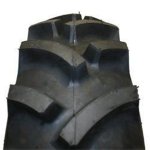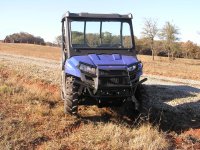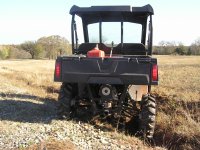Milo
Veteran Member
- Joined
- Aug 7, 2006
- Messages
- 1,001
- Location
- Preston County, WV
- Tractor
- JD 3520, Ferris Z2100, Kawasaki Mule Pro MX, Honda Pioneer 520
I must say my 2012 Polaris 500 mid-size UTV doesn't go as well in snow as the Mule 610 I had before. Going up the same hill with similar amount of snow the Mule in 4wd never had a problem and seldom even spun. The Ranger in 4wd is always spinning. A couple times I thought I might have to back down and get a faster run but the Ranger eventually spun and clawed it's way up. The other issue is it really fishtails under certain conditions. For instance driving straight on a road covered with a few inches of snow in 4WD the back end is going side to side forcing me to constantly correct with the steering. I thought it could possibly be the stock tires but it's been like this since new and only has 75 hours of wear on them. The Mule always tracked fine from the time it was new to when I sold it with mostly worn out tires. A bit of fishtailing in 2wd is expected since the rears are spinning somewhat to maintain speed. The Mule as well, but not in 4wd.
Just trying to think this through and looking how Polaris has the 4wd set up I'm thinking the rear wheels and front wheels do not spin at the same exact rate when in 4wd on a slippery surface. If the front wheels are pulling at say 20 mph while the rears are spinning at 24 mph couldn't that make the rear swing side to side when I'm trying to go straight? That would also explain why it doesn't climb up hill through snow as well, spinning wheels have less traction than wheels turning at the rate of travel. Polaris says their "special system" allows 4wd to be engaged even on good traction surfaces because the front wheels won't pull until needed. It goes on to say the front doesn't actually engage until the rear wheel turns 1/5 of a revolution more than the front. That's a 20% difference and would explain the rear spinning faster in low traction conditions then once back on a good surface the rear no longer spins and the front disconnects again. Unless the system requires the rear to slip 1/5 revolution then somehow they lock and turn 1 to 1. But then how would it know to disconnect again?
Just trying to think this through and looking how Polaris has the 4wd set up I'm thinking the rear wheels and front wheels do not spin at the same exact rate when in 4wd on a slippery surface. If the front wheels are pulling at say 20 mph while the rears are spinning at 24 mph couldn't that make the rear swing side to side when I'm trying to go straight? That would also explain why it doesn't climb up hill through snow as well, spinning wheels have less traction than wheels turning at the rate of travel. Polaris says their "special system" allows 4wd to be engaged even on good traction surfaces because the front wheels won't pull until needed. It goes on to say the front doesn't actually engage until the rear wheel turns 1/5 of a revolution more than the front. That's a 20% difference and would explain the rear spinning faster in low traction conditions then once back on a good surface the rear no longer spins and the front disconnects again. Unless the system requires the rear to slip 1/5 revolution then somehow they lock and turn 1 to 1. But then how would it know to disconnect again?



